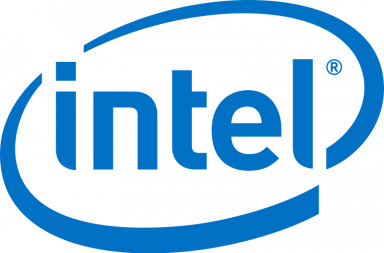
Candlestick patterns are a great decision support tool for active traders. Spotting gravestone doji patterns may sound like a complicated affair. But once you learn what they look like and how to read candlestick charts, you’ll gravestone doji candlestick pattern be a pro at predicting bullish and bearish reversals in no time. Dragonfly doji have no upper shadow and a long lower shadow, which suggests that bulls regained control over the price after strong selling pressure.

It means that the open, the close, and the high price are almost at the same level. Traders should carefully monitor the candlestick’s closing price when identifying a potential long-legged Doji. Pivot Points are automatic support and resistance levels calculated using math formulas. Support and resistance levels are great places to find price reversals. The Gravestone Doji candlestick pattern is formed by one single candle.
What is a ‘Gravestone Doji’ Candlestick?
The content on this website is provided for informational purposes only and is not intended to constitute professional financial advice. Trading any financial instrument involves a significant risk of loss. Tradingindepth.com is not liable for any damages arising out of the use of its contents. When evaluating online brokers, always consult the broker’s website. Tradingindepth.com makes no warranty that its content will be accurate, timely, useful, or reliable. Gravestone Doji is a candlestick which is a strong confirmation to show the market top.
Dojis are popular candlestick patterns that form when an asset opens and closes at the same point. The pattern happens in all types of assets, including currencies, stocks, commodities, and shares. It also happen in all timelines, including minutes, hourly, four-hour, and daily charts.
The Gravestone Doji Pattern – Pros and Cons
A doji is a trading session where the security’s opening and closing levels (or prices) are either equal or virtually equal. The market narrative is that the bulls attempt to push to new highs over the session but the bears push the price action to near the open by the session close. So the long upper shadow represents the bulls losing momentum. In the first table on the left we can see the results of shorting a gravestone doji pattern on the close and holding the trade for one whole day. Using the formula above we can use Amibroker to scan for the gravestone doji and see how the pattern performs as a short signal.
Candlestick charts are great for providing decision support to technical indicators and chart patterns. By identifying dragonfly and gravestone doji, you can increase your confidence in a trade and improve your odds of success. The following S&P 500 SPDR ($SPY) chart shows several gravestone doji that were automatically identified using TrendSpider. In each case, the gravestone doji were followed by a bearish reversal, as the candlestick pattern would predict. These reversals could be confirmed with other indicators as well. If the gravestone Doji candle pattern appears at the end of a downtrend, then it indicates that sellers cannot push prices lower, and a bullish trend reversal is likely to happen.
How to Trade Forex Using the Gravestone Doji Candlestick Pattern – Strategies and Examples
The results suggest that the gravestone doji is not a strong reversal signal. In fact, you would have more success from buying a gravestone doji than shorting one, particularly in stocks. This begs the question as to how many other candlestick patterns are worth bothering with. Gravestone doji candlesticks make up candlestick patterns and tell a price action story.
- Traders should carefully monitor the candlestick’s closing price when identifying a potential long-legged Doji.
- Specific types of Doji patterns – like the Dragonfly or the Gravestone – can signal a possible reversal in prices but are best used in conjunction with other indicators for verification.
- This is important because it shows that sellers have returned to the market, which as a trader, will allow you to act accordingly.
- There are three main types of doji patterns, which include the classic doji, dragonfly doji, and the gravestone doji.
- However, after an upward breakout in
a bear market, price moves higher by 5.09% in 10 days, which is quite good.
When the price reaches the first target, you can either decide to exit the trade, or wait to see if target two is reached. The reason you want to wait for a close below that line is clear. We see a slight hesitation comes on the next candle, which is relatively small and doesn’t manage to break the trigger line. Get ready to receive three amazing chart pattern videos that are over 30 minutes long straight into your inbox. That said, you must confirm that the indicator and the price movement indicate the same, otherwise, there’s a divergence.
How to use the gravestone doji in trading
Unlike the gravestone doji, the dragonfly doji pattern has a long lower shadow. This implies aggressive selling during the period of the candle. In order to test the gravestone doji pattern in Amibroker we need to come up with a definition for the pattern and write it into code. In this instance we shall say that the body should be less than 20% of candle length and it should occur near the bottom of the candle. It should also only appear in an uptrend and we will define this by the presence of a new 10-day high. It should have a narrow body with a long upper shadow and small or non-existent lower shadow.
Advanced Micro Devices In Danger Of Negating Bullish Trend: The Bull Vs. Bear Case For Chip Stock – Advan – Benzinga
Advanced Micro Devices In Danger Of Negating Bullish Trend: The Bull Vs. Bear Case For Chip Stock – Advan.
Posted: Thu, 30 Mar 2023 07:00:00 GMT [source]
Let’s assume that the Candlestick represents a single day’s worth of price action. My book,
Encyclopedia of Candlestick Charts,
pictured on the left, takes an in-depth look at candlesticks, including performance statistics. A Gravestone Doji signals that the price opened at the low of the session. There was a great rally during the session, and then the price closed at the low of the session. Our stop loss should be placed above the high of the gravestone doji to ensure we protect ourselves if the trade goes against us. The next candle after the doji breaks the trigger line, therefore we open a short position.